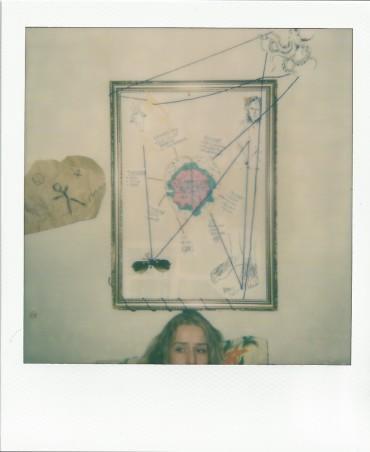By Jonathan SKy
The young woman lying on the examination table looks relaxed, even with four needles sticking out of her face—one on each temple and one in each cheek, just under the eye sockets.
“I doesn’t hurt,” says Jillian Ryan, a Seneca College student. She’s calm, especially considering it’s her first time trying acupuncture. She says the only pain she felt was a split-second pinch when the needle was inserted. Her cheeks turn rosy as says she feels warmth radiating through her face.
“That’s the energy being release,” explains Cory Brett, a fourth-year clinical intern at the Canadian College of Naturopathic Medicine, where she practices her acupuncture skills under the supervision of a licensed naturopathic doctor.
“This treatment is great for treating sinus problems,” Brett says.
The ancient practice of acupuncture has existed in China since 2,500 BC.
It stems from an Eastern philosophy that believes the cosmos are made of complementary energies. The yin (female element) must be in harmony and balance with the yang (male element). These energies, called chi, must be balanced in all things throughout the world, especially in human beings.
Pressure points all over the body can potentially block the good flow of chi. Acupuncture works to improve the energy flow by stimulating these pressure points. Needles are inserted into the pressure points. Needles are inserted into the pressure points, usually five to 10 millimetres deep, for about 15 minutes. The pressure points are further stimulated when the needles are rotated or a low electrical current is run through them.
Acupuncture has been used to treat diverse health problems from common muscle pain to organ disorders to paralysis. Smoking addiction and insomnia are also said to be treatable through acupuncture.
“There is a biological and physical effect that can be observed,” says Dr. Adam Chen of the Michener Institute. The stimulation of nerves during acupuncture causes the release of endorphins (hormones in the brain that relieve pain).
Acupuncture has become on the of the most popular forms of alternative health practices, with an estimated three million Canadians having tried it at least once. Because of its growing popularity, many people in Canada are learning the practice. Traditional Chinese medical practitioners and naturopathic doctors use it as a form of treatment. Many chiropractors, massage therapists, medical doctors and nurses learn acupuncture to add to their repertoire of treatment procedures.
With its rise in popularity, traditional acupuncture—with needles—is changing technologically.
Dr. Fredrick Reynolds, a registered chiropractor of 17 years, has been using laser acupuncture since 1985. “There are no needles involved so it eliminates the potential for contamination,” he says.
Reynolds treats an average of seven patients a week by laser. Each pressure point is stimulated for 15 seconds—Reynolds says the lasers don’t cause any pain. “I know because I only use procedures on my patients that I have used on myself.”
Pain during acupuncture is largely a subjective experience, and patients experience little or no bleeding.
“We use very fine needles,” Brett says. “It’s not like the ones used for injections.”
Chen warns some people face health risks. Acupuncture isn’t recommended for pregnant women or people with pacemakers. A rare few are allergic to the metal needles.
Acupuncture is covered under most extended health plans, including RyeSAC student plan, the one available to Ryerson students.
Under the RyeSAC health plan, students are covered $15 for every visit, up to a maximum 20 visits per school year.
“It can be performed by a permanently registered chiropractor who is also a certified acupuncturist,” says Kristy Black, a representative at Clarica, which is the health insurance company used by RyeSAC.
Another option is to visit a naturopathic doctor. Naturopathic medicine is covered under RyeSAC’s health plan for up to $250 a year, as long as the practitioner is registered with the Canadian Naturopathic Association. A typical half-hour session of acupuncture costs about $30.








Leave a Reply